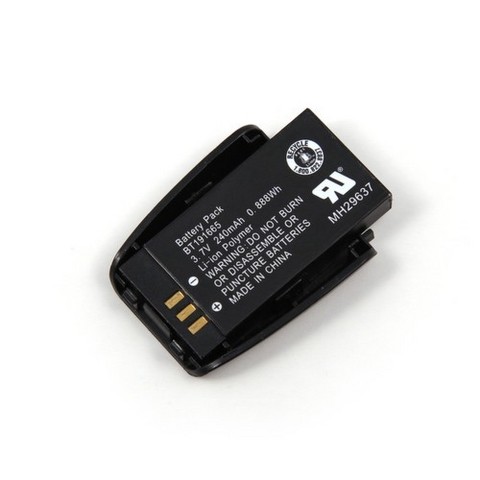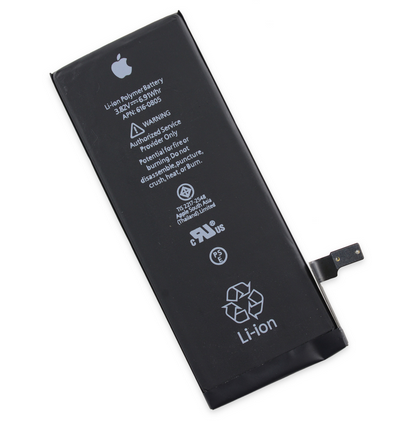Battery Navigation
Latest topics
Search
Battery Statics
Ads
Algae Could Increase the Battery Capacity
Page 1 of 1
 Algae Could Increase the Battery Capacity
Algae Could Increase the Battery Capacity
In addition to size, one of the challenges for the design of any mobile device is to get a battery that can give as much autonomy as possible without sacrificing size, weight and penalize also not nag device design. The other day my colleague David brought us 5 tips to extend the autonomy of our smartphone but, really, today's devices require batteries with greater capacity. Indeed, researchers at the Georgia Institute of Technology and Clemson University have explored the possibility of increasing the capacity of lithium batteries using seaweed.
Seaweeds, although often we do not realize, are used in many fields such as food additive or cosmetic products. According to these researchers the alginate may be the solution to the problem of battery capacity. Currently, lithium battery pack can store up to 10 times more energy per cell if the graphite anodes were replaced by others made out of silicon, however, are not used because they tend to degrade with the charging and discharging of the battery As sacrificing the ability to lengthen the useful life of the battery.
A lithium ion battery energy stored by the accumulation of ions at the anode and, during use, the ions travel through an electrolyte to the cathode. Anodes, as commented, are composed of a mixture of a graphite powder with a binder polymer (or polyvinylidene fluoride PVDF). By contrast, when using silicon instead of graphite, the anode of the battery can store more ions, however, the silicon particles are swollen when the battery is charged and the volume increase (up to four times its size ) causes cracks in the structure of PVDF and pro Therefore, damage to the anode. Adding the alginate as a substitute for PVDF, the anode can swell but the structure does not become brittle, resulting in a stable silicon anode, for now, is capable of multiplying by eight of the battery capacity with graphite anodes.
It is surprising that a compound as alginate, used to thicken food additive or as creams, may contribute to the generation of much larger capacity batteries. According to Gleb Yushin, head of the Center for Nanostructured Materials for Energy Storage Georgia Institute of Technology, the team was looking synthetic polymer derived from plant cellulose structures because they were close to what they wanted but were not uniform, so focused on aquatic plants:
Another advantage of using alginate is that it simplifies the manufacturing process of the anode of the battery because, does not necessitate the use of a solvent (NMP) can be replaced by water. Furthermore, the computer wants to explore the possibility of applying the alginate to improve the performance of the batteries with graphite anodes, to allow more cycles of charging and discharging, thus prolonging the life of the device.
However, it is quite time for us to see these batteries on the market. Following this finding, researchers must develop a cathode that is capable of handling the same amount of lithium ions the anode, even according to data from Yushin, the existing cathodes combined with silicon anodes and alginate, could increase the capacity Battery current in a 30% -40%.
Seaweeds, although often we do not realize, are used in many fields such as food additive or cosmetic products. According to these researchers the alginate may be the solution to the problem of battery capacity. Currently, lithium battery pack can store up to 10 times more energy per cell if the graphite anodes were replaced by others made out of silicon, however, are not used because they tend to degrade with the charging and discharging of the battery As sacrificing the ability to lengthen the useful life of the battery.
A lithium ion battery energy stored by the accumulation of ions at the anode and, during use, the ions travel through an electrolyte to the cathode. Anodes, as commented, are composed of a mixture of a graphite powder with a binder polymer (or polyvinylidene fluoride PVDF). By contrast, when using silicon instead of graphite, the anode of the battery can store more ions, however, the silicon particles are swollen when the battery is charged and the volume increase (up to four times its size ) causes cracks in the structure of PVDF and pro Therefore, damage to the anode. Adding the alginate as a substitute for PVDF, the anode can swell but the structure does not become brittle, resulting in a stable silicon anode, for now, is capable of multiplying by eight of the battery capacity with graphite anodes.
It is surprising that a compound as alginate, used to thicken food additive or as creams, may contribute to the generation of much larger capacity batteries. According to Gleb Yushin, head of the Center for Nanostructured Materials for Energy Storage Georgia Institute of Technology, the team was looking synthetic polymer derived from plant cellulose structures because they were close to what they wanted but were not uniform, so focused on aquatic plants:
Another advantage of using alginate is that it simplifies the manufacturing process of the anode of the battery because, does not necessitate the use of a solvent (NMP) can be replaced by water. Furthermore, the computer wants to explore the possibility of applying the alginate to improve the performance of the batteries with graphite anodes, to allow more cycles of charging and discharging, thus prolonging the life of the device.
However, it is quite time for us to see these batteries on the market. Following this finding, researchers must develop a cathode that is capable of handling the same amount of lithium ions the anode, even according to data from Yushin, the existing cathodes combined with silicon anodes and alginate, could increase the capacity Battery current in a 30% -40%.
juda- Posts : 9
Points : 29
Reputation : 0
Join date : 2012-01-13
 Similar topics
Similar topics» High Capacity Wireless Charging Power Bank WSRB-80
» Battery For Garmin iQue 3600 Replaces 1A2W423C2 High Capacity
» Battery For Garmin iQue 3600 Replaces 1A2W423C2 High Capacity
Page 1 of 1
Permissions in this forum:
You cannot reply to topics in this forum













» NIO Phone 2 Smartphone Battery NBET02
» Mercedes Becker Map Pilot Battery HJS100
» Braun Silk-épil 9 Flex Type 5380 Epilator Battery
» Samsung Galaxy Tab Active Tablet PC Battery EB-BT365BBU
» Samsung Galaxy Tab Active 3 SM-T570 Tablet PC Battery EB-BT575BBE